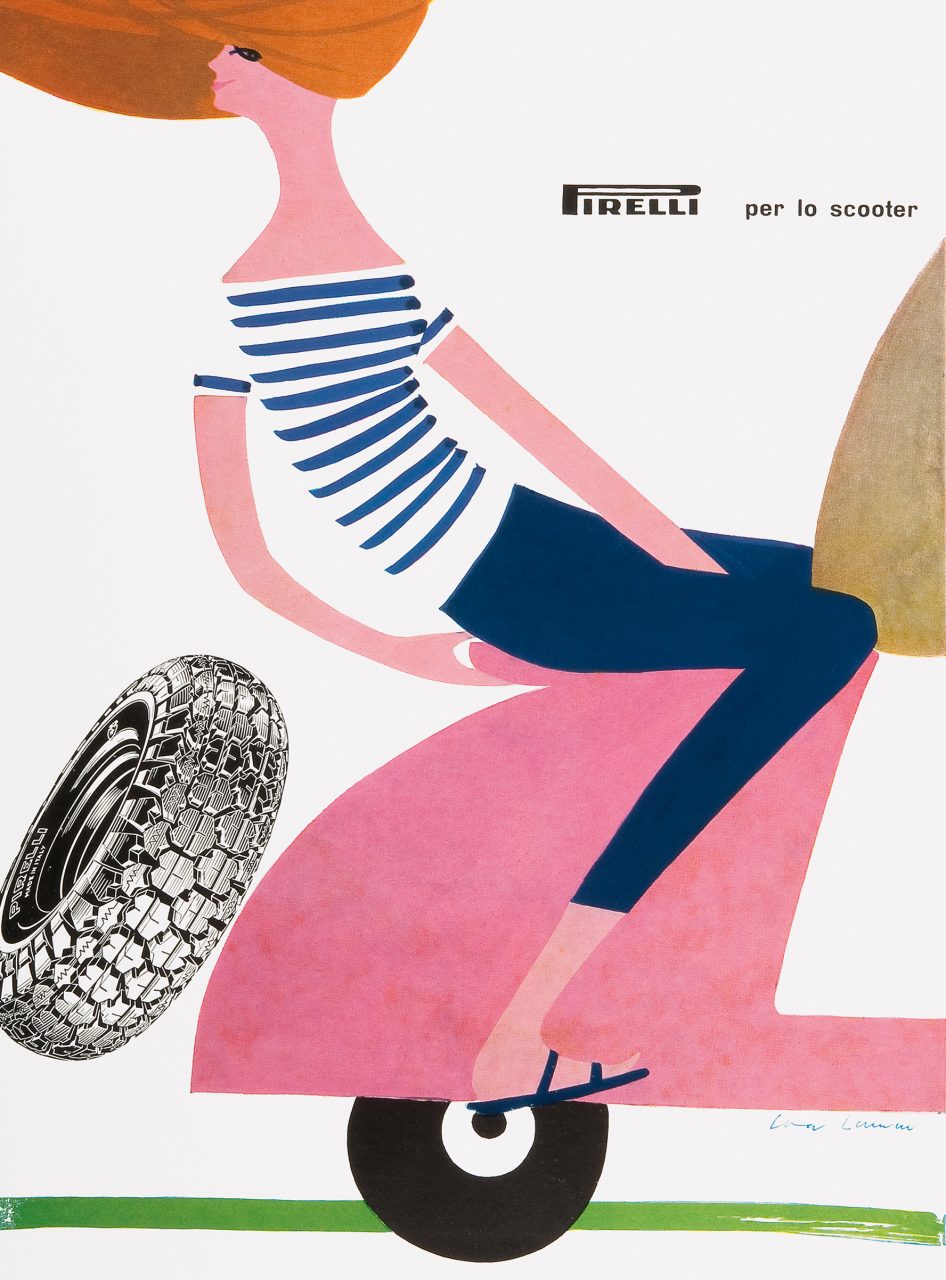There were also special exhibitions of gifts and products from foreign countries. The Japan exhibition of 1956 was a milestone in Lamm’s output. And, as a result of the buyers’ trips to foreign countries and the Rinascente’s relationship with American stores such as Macy’s in New York and Neiman Marcus in Dallas, Lamm exchanged drawings, gifts and mutual admiration notes with Andy Warhol, although they never met in person. ‘Warhol’s drawings were perfect,’ Lamm says. ‘He had a well trained eye and hand. People mostly know his pop works, with all the reproductions and photos, but he was a fantastic disegnatore.’
For Lamm, the basis of successful graphic design is good drawing: ‘One must know how to draw and how to design lettering.’ At 87, she still sketches and draws, and she currently has a plan for a book (not necessarily for children) on the daily life of a peanut.
She has an almost samurai way of working: first a lot of thinking, then a rapid and precise realisation of the idea with the brush on an A6 sheet in gouache. Then she moves on to collage, photo-composition and lettering, with copywriting developed by Swiss-Italian stylist Amneris Latis, in the Italian language, but with a five per cent Swiss twist. The images are blown up, then printed in rotogravure on a large grid. In some cases, the pencil drawing is evident underneath the colours. This gives the posters an airy, fluid feel, as if the scene is taking place in the breezy outdoors.
In the Milan years, Lamm also worked freelance for Elizabeth Arden and Pirelli, among others. ‘I designed for Rinascente by day, and for these other clients by night,’ she says. The Pirelli posters were meant to hang in car-repair shops.
Paper choice has always been an important part of Lamm’s design projects. ‘A small number of copies and lithography? You could specify a good, expensive paper,’ Lamm says. ‘Many copies and rotogravure? Then it was probably going to end up on cheap paper. Paper has to be like a fabric, to be felt in your hands and persuade you to turn the pages. Coated paper is cold, sometimes rigid. When possible, we would use beautiful papers from Fischer [a Swiss distributor of fine papers, including Fedrigoni’s] and Fabriano, and perhaps print at Muggiani’s.’
By 1962 things were changing at La Rinascente, and Lamm decided it was time to leave. Despite the temptations of the US, she returned to Zürich and joined Thiessing’s BSR advertising agency, serving clients in diverse fields such as textiles (Patrick Hoffel, Fischbacher, Lodenfrey), aerospace, food, fashion and pharmaceuticals, working a lot with photography and type.
‘It was fun to design for aerospace and the defence industry,’ Lamm says. ‘There, the typography and the choice of paper were important; while designing for textile companies required a feminine touch. One must deal with the client with good manners and intelligence. And the client should trust the designer. However, I guess my earlier work shows a kind of independence: this is my work and if you don’t like it – too bad! I knew the Milan years had been a unique experience,’ she says.
Knowing the right people, who believed in her at the right time, played an important role in Lamm’s life. First of all, her father who, when she was eighteen, encouraged her to leave the mountains and to study in Zürich. Then designer Max Huber; Rinascente’s creative director Gianni Bordoli; Pirelli’s head of communication Arrigo Castellani; and the late Frank Thiessing (1917-2009). Though not so famous as some, Thiessing was an elegant and cultivated professional who, in 1953, encouraged Lamm to cross the Alps; and who later, in 1962, invited her to join his studio. Twelve years ago he asked her to be his wife.
zhdk.ch




